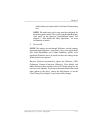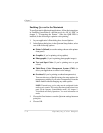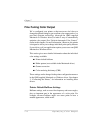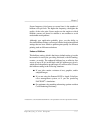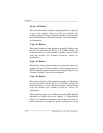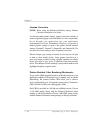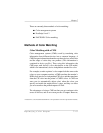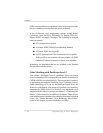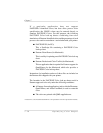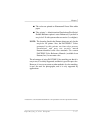
Gamma Correction
NOTE: When using the Enhanced Halftone setting, Gamma
Correction should be set to None.
As with most other printer settings, gamma correction (which is a
means of optimizing gray scales and shades of color) can probably
be set through your application (see your application
documentation for more information.) However, we provide a
default gamma setting for each of the printer default halftone
settings: Gamma53, Gamma71, Gamma80, and Gamma106. We
also provide a None setting to turn off gamma correction.
Often in images, gray scaling or shades of color may be too light
or dark to show details clearly. Using gamma correction on a
gray-scale image is similar to using a graphic equalizer on a home
stereo: the range of gray levels is adjusted for the best possible
result. This sharpens overall midrange contrast while shadows and
highlights keep their original values.
Printer-Resident Color Rendering Dictionaries
If you use the QMS-supplied Windows or Macintosh driver (or an
application capable of PostScript Level 2 printing, such as Adobe
PhotoShop), the printer-resident CRDs allow you to achieve
device-independent color. Your printer comes with a Colorimetric
CRD, a Business CRD, and a Photographic CRD.
Each CRD is provided in a 300 dpi and a 600 dpi version. Choose
a 300 CRD setting (along with the Enhanced halftone) when
printing in 300 dpi resolution. Choose a 600 CRD setting (along
with the Enhanced halftone) when printing in 600 dpi resolution.
Chapter 7
7-10 Optimizing Color Output




